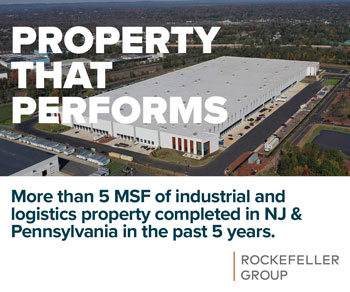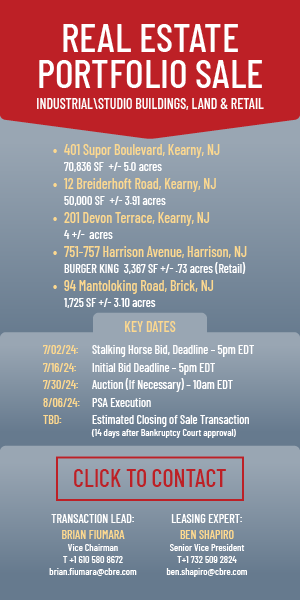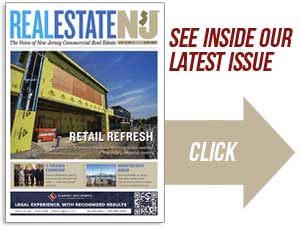By Joshua Burd
Industrial space remains a coveted asset class for investors, despite questions about short-term rent growth and other uncertainties in the wake of the coronavirus crisis.
That’s according to panel of development and investment executives who spoke last week as part of NAIOP’s annual I.CON event, which was held virtually amid restrictions on large gatherings. The pandemic has raised concerns about underwriting, lending and the health of smaller tenants, they said, but values have held steady and large tenants are still actively seeking prime logistics buildings.

“I don’t think we’re immune from what happened,” said Dave Fazekas, co-chief investment officer of Black Creek Group and head of the firm’s eastern region. “The industrial space will definitely see some impacts from this, but all in all we’re holding up really well and we’re really fortunate to be in the industrial space.”
Moderated by Kevin Welsh, who leads Newmark Knight Frank’s tristate suburban capital markets team, the panel provided a look into how the crisis has affected investment activity within the industrial sector. While buyers and sellers are both proceeding with caution, panelists agreed that values are largely intact after a small, short-term dip.
“We were able to get a couple of transactions done post-COVID, earlier in process, and I think we were able to achieve slightly higher cap rates than maybe what they were pre-COVID,” Fazekas said, referring to recent acquisitions by Black Creek. “But what we saw was, really quickly, as the buyer pool came back into the market, that whatever small premium there was really eroded and has gone away. So values have held up really well in the industrial space.”

Mike Coppola of Bluewater Property Group agreed that there were a select few investors who capitalized on “modest price dislocation” in the market, providing an outlet for sellers who were seeking short-term certainty. But he said there was little sign of distress “other than the occasional one-off, (such as) a retailer or somebody that has liquidity needs.”
Still, he noted that investors are treading carefully on both sides, making it all the more important for Bluewater to stay focused on securing entitlements for ground-up development throughout the Northeast.
“There’s still opportunity out there to find those types of sites that kind of take a while to bring full circle,” said Coppola, a partner with the Conshohocken, Pennsylvania-based firm. “And I think, in this period we’re in now, we’re in a bit of a wait-and-see. Sellers, understandably, are certainly not interested in any type of fire sale and I think buyers are appropriately being cautious in how aggressive they are right now.”

Whether rents will continue to grow in the months ahead is still uncertain. Welsh, an executive managing director with NKF, noted that New Jersey and other major markets have seen “unprecedented growth over the last five years,” yet he pointed to a lack of data points in the immediate aftermath of the pandemic.
Fazekas said it may be at least a year before landlords can enjoy that pace again.
“Today I think everybody is looking at this,” he said. “We’ve dug into this, we’ve looked at multiple research resources and all of them seem to be forecasting muted rent growth in 2020 and 2021 and then a recovery and basically getting back to that 5 to 7 percent rent growth again in 2022 and beyond.”
He said it was crucial to remember the absolute strength of the market coming into the COVID emergency.
“Demand seems to be holding up much better, we have not seen any erosion in rents to date,” Fazekas added. “So all of that feels really good and logical that, within the next year or two, we should get back to where we were.”
The panelists said they’ve enjoyed surprisingly strong leasing activity over the past three months, especially among larger tenants that could withstand the economic turmoil of the pandemic. Many have even thrived as a result, they said, noting that many industrial users were deemed essential businesses that remained open during widespread stay-at-home orders.
Smaller tenants, typically those with less than 200,000 square feet, have also begun to respond in recent weeks after a more pronounced slowdown.

“We’ve been pleasantly surprised by the amount of deal volume that we’ve seen nationally,” said Stephanie Rodriguez, vice president of leasing and development in Duke Realty’s South Florida office. “And rates seem to be holding at this point, but I think the smaller tenants are still of some concern. They’ve been able to pay their rents and we’ve been very happy with our strong collections so far, but as this lingers and these smaller tenants … continue to struggle with their businesses, we’ll see what happens with those spaces in the market.”
Fazekas said he believes many smaller users were more impacted by the lack of economic certainty, adding that some may have required federal stimulus funding in order to return to full strength. Coppola and Rodriguez also noted that some occupiers may have been hoping to find a discount amid the turmoil.
“We got the sense that the smaller tenants wanted to see if there was going to be softening in the market,” Coppola said, much as investors took a wait-and-see approach. “So whether they went into a holdover or not might be a different story, but I think there were a lot of tenants that waited until a lot closer to the lease expirations, looking to see whether they’d get a considerably better rate than they could have pre-COVID.”
He also said “landlords have done a good job of, understandably, holding the line on renewals, so I think tenants are acknowledging there’s not going to be that deep bargain out there to seize upon.”
That’s not to say that it has been easy to underwrite deals and development projects in recent weeks, according to the panelists. Rodriguez said there is still uncertainty about spaces that are coming back to the market or being offered for sublease, while developments that broke ground before the pandemic may not be resuming construction.
Those questions are swirling as land values in South Florida have held steady or increased in some cases.
“It’s hard to underwrite those and try to figure out, ‘OK, I’ve got 18 months to entitle and permit a project — where is rent going to be when I’m ready to lease this?’ ” Rodriguez said. “And then construction costs aren’t going down, either, by any stretch, so you’ve got that pushing against you as well.”
To Coppola, speculative construction for now is “next to impossible without an existing relationship.”
“It feels like it’s improving, but it’s the same with any type of value play: It’s tough to get lenders comfortable,” he said. “We certainly have confidence that that will change as the data points continue to prove out the case, but it’s certainly put a pause on the development pipeline that was going on in this state.”
Still, the short-term uncertainty seemingly hasn’t deterred institutional investors.
“You’re starting to see again a flow of funds into the space,” Coppola said. “It’s been going on for a long time, but even within the last 30 days, the number of calls from investors that are allocating out of retail and into industrial — and then within industrial have needs in tier one markets — it can’t help but prop up values in our sector.
“In the here and now, it’s tough. I think all of the things that we’re saying are medium- or long-term predictions or trends,” he continued. “Short-term, we’re talking about spikes in cases in other markets and how our kids go back to school and we go back to work. I think the short term is very tough to predict, but once we get through that, the fundamentals feel good.”










